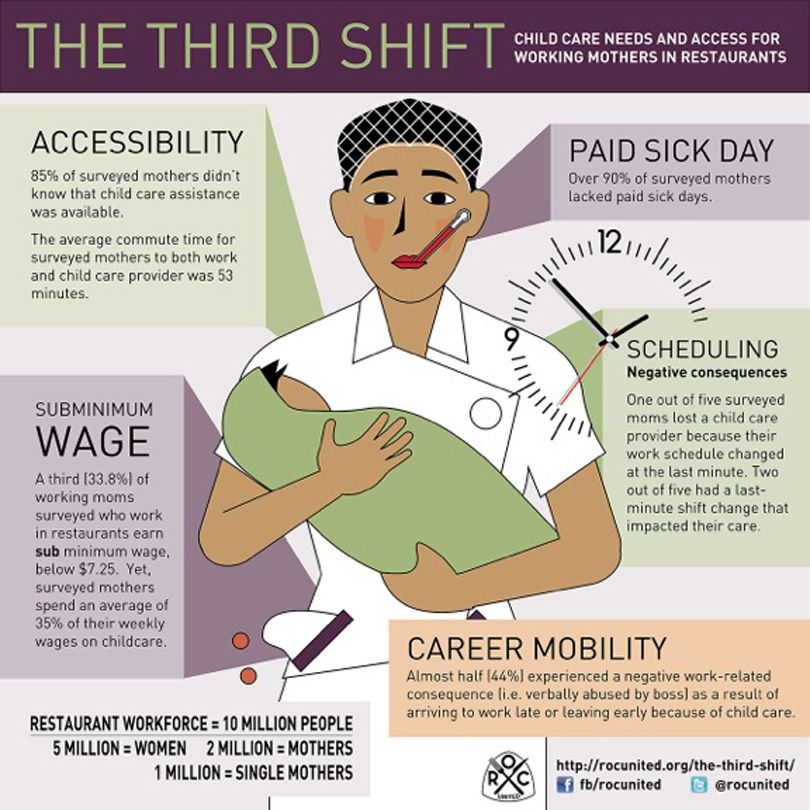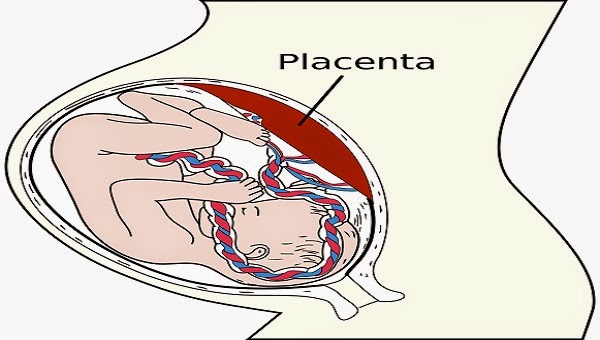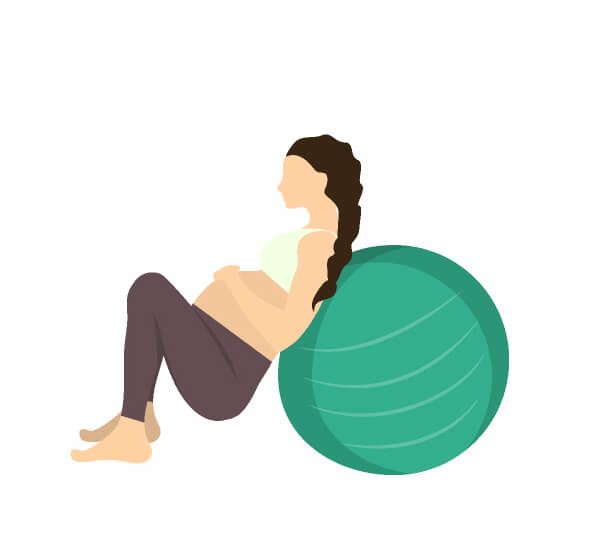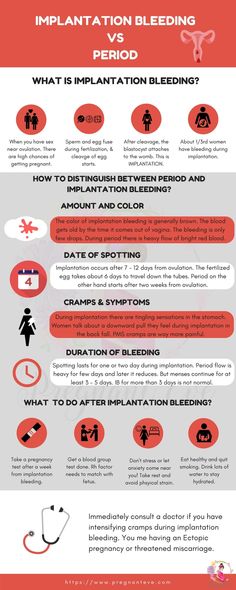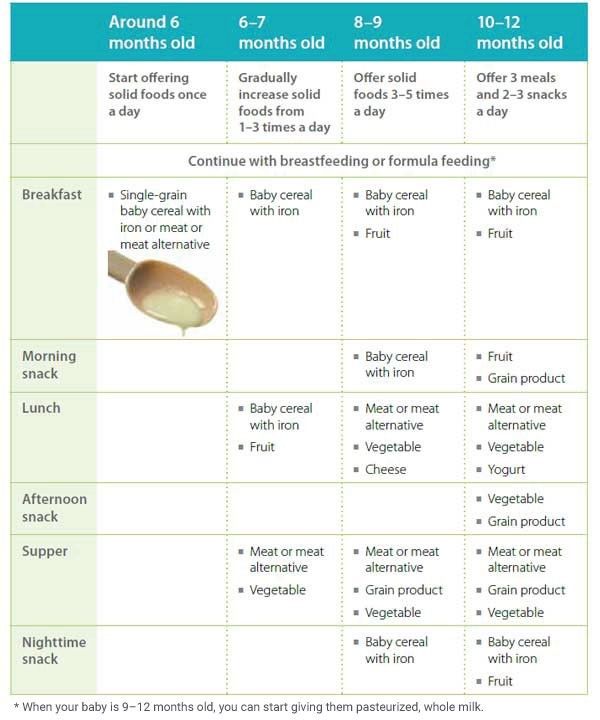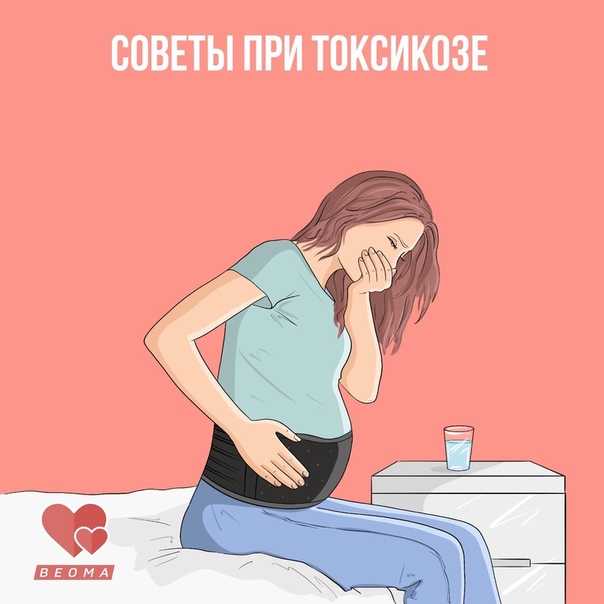How does child care assistance work
Child Care Works Program
The subsidized child care program helps low-income families pay their child care fees. The state and federal governments fund this program, which is managed by the Early Learning Resource Center (ELRC) office located in your county.
If you meet the guidelines:
- The ELRC will pay a part of your child care cost. This is called a subsidy payment.
- You will pay a part of the cost. This is called the family co-pay.
- The subsidy payment and the family co-pay go directly to the child care program.
NOTE: If your child care subsidy does not pay the full amount that your child care program charges, the provider may ask you to pay the difference between the subsidy payment and their private charges.
Guidelines
You must submit an application to the ELRC to see if you meet the guidelines for the subsidized child care program.
The following are the basic guidelines:
- You must live in Pennsylvania
- Have a child or children who need child care while you work or attend an education program
- Meet income guidelines for your family size
- Work 20 or more hours a week - or-
- Work 10 hours and go to school or train for 10 hours a week
- Have a promise of a job that will start within 30 days of your application for subsidized child care
- Teen parents must attend an education program
- The child who needs care must be a citizen of the United States or an alien lawfully admitted for permanent residency
- Have proof of identification for each parent or caretaker in the home.
Income Guidelines
The annual income for a family to be eligible to receive a subsidy is 200 percent or less of the Federal Poverty Income Guidelines:
| Family Size | Maximum Yearly Family Income (May 2022) |
| 2 | $36,620 |
| 3 | $46,060 |
| 4 | $55,500 |
| 5 | $64,940 |
| 6 | $74,380 |
| 7 | $83,820 |
| 8 | $93,260 |
(Note: The above information provides only general guidelines. Other conditions may apply. Please contact your county Early Learning Resource Center to apply for assistance.)
Additional Guidelines
- Each adult family member must work at least 20 hours a week or work at least 10 hours a week and participate in an approved training program at least 10 hours a week.

- The hours that a child may receive subsidized child care must coincide with hours of work, education, or training.
- Children are eligible for care from birth until the day prior to the date of the child's 13th birthday. Children with disabilities may be eligible through age 18.
- The parent is responsible to help pay for child care. This is called a co-payment. The co-payment may be as little as $5.00 per week and varies according to your income and the number of people in your family.
- The parent may choose the provider of his or her choice. The parent may choose a child care center, a small family day care home, a group day care home or even a relative to care for his or her child.
- The parent who is receiving a subsidy must choose an eligible child care provider. Relative providers must complete an Agreement with the ELRC, must comply with the participation requirements listed in the Agreement and must complete CareCheck in order to be eligible to participate in the Subsidized Child Care Program.
 CareCheck is the Department of Human Services' program that requires background clearances (see below).
CareCheck is the Department of Human Services' program that requires background clearances (see below). - If funding is not available at the time that a low-income, working parent applies for subsidized child care, the child may be placed on a waiting list.
You can also apply for benefits and renew benefits by using COMPASS, the online resource for cash assistance, Supplemental Nutrition Assistance Program (SNAP), child care, health care coverage, home heating assistance (LIHEAP), school meals, SelectPlan for Women and long-term living services.
Information on child care facilities
You may contact your local Early Learning Resource Center for resource and referral services. Your ELRC can assist you in finding a facility that meets your needs. You can also find a listing of regulated child care providers through the Online Child Care Provider Search. To request information regarding a facility's certification or registration history, current certification status, and verified complaint history you may contact the Regional Child Development Office or review a facility's history online.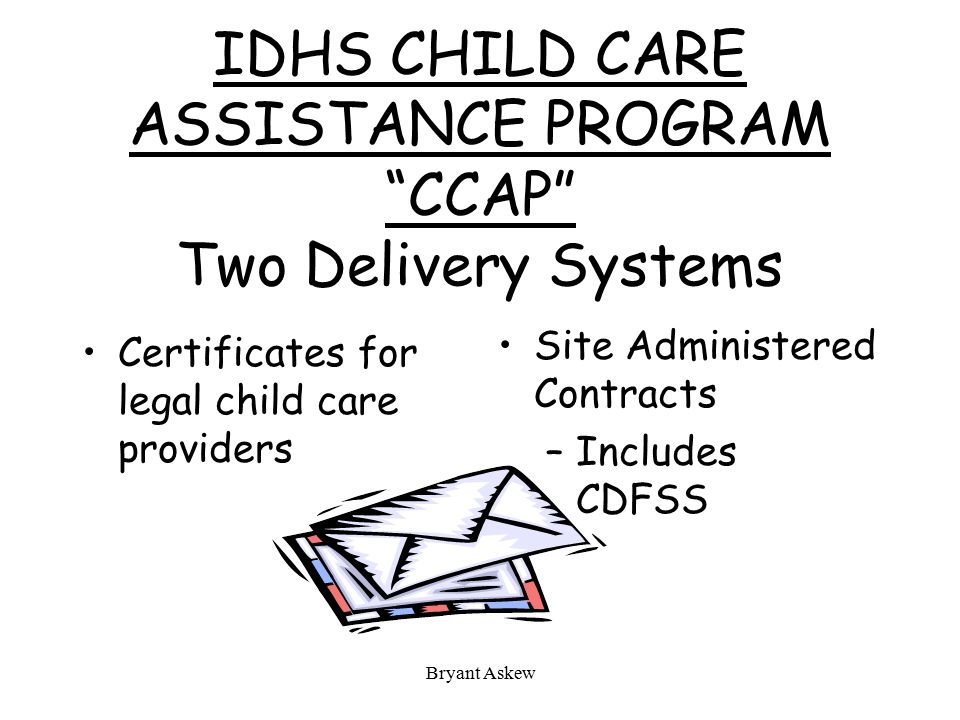
Making a complaint/reporting a facility operating illegally without a department license
Contact the appropriate Department of Human Services' Regional Child Development Office. Each regional child day care office is assigned responsibility for certain counties in Pennsylvania. Regional office staff investigates complaints about child care centers, group child care homes, and family child care homes that do not follow the regulatory requirements for operating a facility. You may also register an Online Complaint.
Ensuring your child's Safety
The most important way to be certain that your child is safe and well cared for is to become a partner with your child care provider. Here is a checklist that will provide you with ideas about what to look for at the provider location you choose.
For more information, call the Child Care Works helpline at (877) 472-5437 or find the appropriate ELRC for your county. Click to view the Subsidized Child Day Care Eligibility Regulations.
CareCheck: is the term for required child abuse and State Police background clearances for relatives who care for children whose parents participate in the subsidized child care program.
Relatives who care for three or fewer children, not including their own children, are not required to have a state license but can receive subsidized child care funding. Relatives who participate as providers for the subsidized child care are required to complete CareCheck. CareCheck is the Department of Human Services program that requires State Police criminal history and child abuse background clearances for all relative providers. In addition to CareCheck, relatives must obtain Federal criminal history clearances. The relative provider must pay the cost of the Federal criminal history clearance, which is $23.00. Relatives must complete CareCheck and Federal criminal history clearances in order to be eligible to be paid through the Subsidized Child Care Program.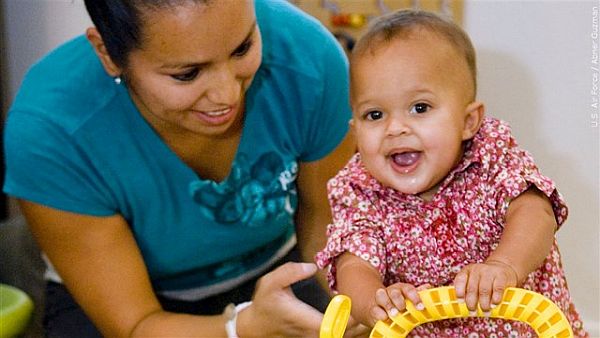 Relatives are defined as grandparents, great-grandparents, aunts, uncles, and siblings. All relative providers must be 18 years of age or older and live in a residence separate from the residence of the child for whom they will provide care.
Relatives are defined as grandparents, great-grandparents, aunts, uncles, and siblings. All relative providers must be 18 years of age or older and live in a residence separate from the residence of the child for whom they will provide care.
To find out more about background clearances, call the Child Care Works helpline at (877) 4-PA-KIDS (1-877-472-5437).
Child Care Assistance Program for Families
To support all families in accessing high quality child care, the Child Care Assistance Program (CCAP) provides financial assistance to low-income families while they are working or attending school.
CCAP WAITLIST WILL BEGIN OCTOBER 1, 2022
With changes in rates & eligibility the number of families applying and eligible for CCAP exceeds funds now available to serve families. A waitlist has been established so eligible families can access slots as soon as funding is available again. For more information, please see the CCAP Waitlist FAQs.
For more information, please see the CCAP Waitlist FAQs.
Do I Qualify For Child Care Assistance (CCAP)?
| CCAP Resource Guide for Families Seeking Employment or Training | Download |
| CCAP Resource Guide for Families Seeking Employment or Training (Arabic) | Download |
| CCAP Resource Guide for Families Seeking Employment or Training (Spanish) | Download |
| CCAP Resource Guide for Families Seeking Employment or Training (Vietnamese) | Download |
| CCAP Resource Guide for Homeless Families | Download |
| CCAP Resource Guide for Homeless Families (Arabic) | Download |
| CCAP Resource Guide for Homeless Families (Spanish) | Download |
| CCAP Resource Guide for Homeless Families (Vietnamese) | Download |
| Child Care Assistance Application Checklist | Download |
| Child Care Assistance Application Checklist (Spanish) | Download |
| Child Care Assistance Application Checklist (Vietnamese) | Download |
| Child Care Assistance Paper Application | Download |
| Child Care Assistance Paper Application (Spanish) | Download |
| Child Care Assistance Paper Application (Vietnamese) | Download |
| Child Care Assistance Report of Changes Form | Download |
| Child Care Assistance Report of Changes Form (Spanish) | Download |
| Child Care Assistance Report of Changes Form (Vietnamese) | Download |
| Early Childhood Developmental Screenings Guidebook | Download |
| Early Childhood Resource Guide for Preventing Expulsion & Suspension | Download |
Informational Resources for Partners
Partners interested in sharing CCAP information and resources can access our communications toolkit, with downloadable and printable materials.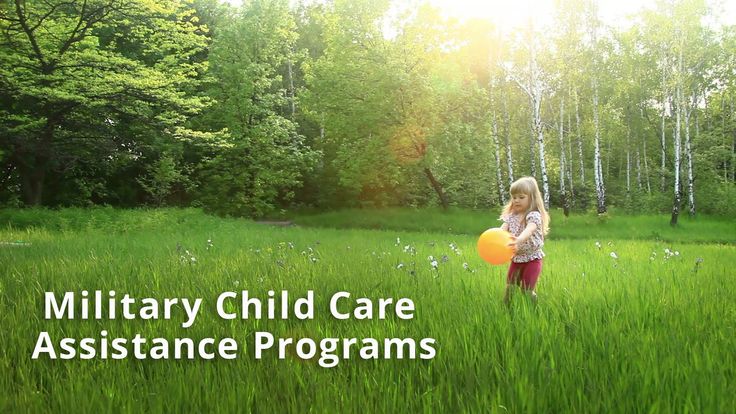
| CCAP Informational Flyer | Download |
| CCAP Informational Flyer (Spanish) | Download |
| CCAP Social Media Graphics (English) | Download |
| CCAP Social Media Graphics (Spanish) | Download |
| QR Code (CCAP Application Portal) | Download |
| QR Code (CCAP Main Landing) | Download |
CCAP Household Eligibility
P.O. Box 260037
Baton Rouge, LA 70826
Telephone: 1.877.453.2721
Fax: 225.376.6060, 225.342.3906
Email: LDEccap@la. gov
gov
Report
Child Abuse
Toll-Free:
1-855-4LA-KIDS
(1.855.452.5437)
Report
Possible Fraud
[email protected]
Toll-Free: 1.877.453.2721
Report complaints about child care providers or unlicensed sites
[email protected]
225.342.9905
Louisiana Department of Education
1201 North Third Street
Baton Rouge, LA 70802-5243
Toll-Free 1.877.453.2721
Monthly allowance for child care for persons not subject to compulsory social insurance
The applicant has the right to file a complaint against the decisions and (or) actions (inaction) of the authorized body, its officials in the provision of public services (complaint), including in the pre-trial (out of court) procedure in the following cases:
- violation of the application registration deadline;
- violation of the term for the provision of public services;
- requirement from the applicant of documents, information or actions not provided for by the regulatory legal acts of the Russian Federation for the provision of public services;
- refusal to provide a public service, if the grounds for refusal are not provided for by federal laws and other regulatory legal acts of the Russian Federation adopted in accordance with them;
- refusal to accept documents, the submission of which is provided for by regulatory legal acts of the Russian Federation for the provision of public services;
- requesting from the applicant, when providing a public service, a fee not provided for by the regulatory legal acts of the Russian Federation;
- refusal of the authorized body, its officials to correct the misprints and errors made by them in the documents issued as a result of the provision of public services or violation of the deadline for such corrections;
- violation of the term or procedure for issuing documents based on the results of the provision of public services;
- suspension of the provision of public services, if the grounds for suspension are not provided for by federal laws and other regulatory legal acts of the Russian Federation adopted in accordance with them, laws and other regulatory legal acts of the constituent entities of the Russian Federation, municipal legal acts.

Subject of complaint
The subject of the complaint is a violation of the rights and legitimate interests of the applicant, unlawful decisions and (or) actions (inaction) of the authorized body, its officials in the provision of public services, violation of the provisions of the administrative regulations and other regulatory legal acts that establish requirements for the provision of public services.
A citizen has the right to file a complaint in writing on paper by mail or in person to any PFR Client Service, as well as in electronic form:
- on the official website pfr.gov.ru;
- portal vashkontrol.ru;
- portal do.gosuslugi.ru.
The reason for the appeal may be dissatisfaction with the quality of the provision of public services by the PFR, violation of the terms for the provision of services, violation of the terms for registering a request for a service, refusal to correct errors or typos, refusal to provide a public service, refusal to accept documents, demand for an additional fee.
Procedure for filing and handling a complaint
The complaint must contain:
- name of the authorized body, last name, first name, patronymic (if any) of its officials providing the public service and (or) their leaders, decisions and actions (inaction) of which are being appealed;
- last name, first name, patronymic (if any) of the applicant, information about the place of residence, as well as contact phone number (numbers), e-mail address (s) (if any) and postal address to which the answer should be sent to the applicant;
- information about the appealed decisions and (or) actions (inaction) of the authorized body, an official of the authorized body, its head;
- arguments on the basis of which the applicant does not agree with the decisions and (or) actions (inaction) of the authorized body, an official of the authorized body, its head.
The applicant shall submit documents (if any) confirming his arguments or copies thereof.
When filing a complaint in electronic form, the documents specified in paragraph 106 of the administrative regulations may be submitted in the form of an electronic document signed with an electronic signature, the form of which is provided for by the legislation of the Russian Federation. In this case, an identity document of the applicant is not required.
In the authorized body, officials authorized to consider complaints are determined, who ensure:
- receiving and handling complaints;
- sending complaints to the body authorized to consider them.
Complaints against decisions and (or) actions (inaction) of an official of the authorized body are considered by the head of the authorized body or an official of the authorized body authorized to consider complaints. Complaints against decisions and (or) actions (inaction) of the head of the authorized body are considered by an official of the executive authority of the constituent entity of the Russian Federation authorized to consider complaints.
If the complaint is filed by the applicant with a body whose competence does not include making a decision on the complaint, within 3 working days from the date of its registration, the said body sends the complaint to the body authorized to consider it and informs the complainant in writing about the redirection of the complaint.
The authorized body ensures:
- equipment for receiving complaints;
- informing applicants about the procedure for appealing against decisions and (or) actions (inaction) of the authorized body, officials of the authorized body by posting information on information boards in places where public services are provided, on the website of the authorized body, on the Single portal, service portal;
- advising applicants on the procedure for appealing against decisions and (or) actions (inaction) of the authorized body, officials of the authorized body at a personal appointment, by phone, using the website of the authorized body;
- conclusion of agreements on interaction between the multifunctional center and the authorized body in terms of the implementation by the multifunctional center of receiving complaints and issuing the results of consideration of complaints to the applicant;
- formation and quarterly submission to the Federal Service for Labor and Employment of reports on received and considered complaints (including the number of satisfied and unsatisfied complaints).

Deadlines for considering a complaint
A complaint received by the authorized body shall be subject to registration no later than the working day following the day of its receipt.
The complaint is subject to consideration within 15 working days from the date of its registration, and in the event of an appeal against the refusal of the authorized body to accept documents from the applicant or to correct misprints and errors, or in the event of an appeal against a violation of the established deadline for such corrections - within 5 working days from the date of its registration.
Result of consideration of the complaint
The result of the consideration of the complaint is the adoption of one of the following decisions:
- satisfy the complaint, including in the form of cancellation of the decision made by the authorized body, correction of typos and errors in documents issued as a result of the provision of public services, return to the applicant of funds, the collection of which is not provided for by the regulatory legal acts of the Russian Federation, regulatory legal acts of the subjects Russian Federation, municipal legal acts;
- refuse to satisfy the complaint.

When satisfying the complaint, the authorized body takes comprehensive measures to eliminate the identified violations, including the issuance of the result of the public service to the applicant no later than 5 working days from the date of the relevant decision, unless otherwise provided by the legislation of the Russian Federation.
A complaint may be denied in the following cases:
- availability of a court decision that has entered into legal force on a complaint about the same subject and on the same grounds;
- filing a complaint by a person whose powers have not been confirmed in the manner prescribed by the legislation of the Russian Federation;
- the presence of a decision on a complaint made earlier in accordance with the requirements of the Rules for filing and considering complaints against decisions and actions (inaction) of federal executive bodies and their officials, federal civil servants, officials of state non-budgetary funds of the Russian Federation, state corporations endowed with in accordance with federal laws, the powers to provide public services in the established field of activity, and their officials, organizations provided for by Part 1.
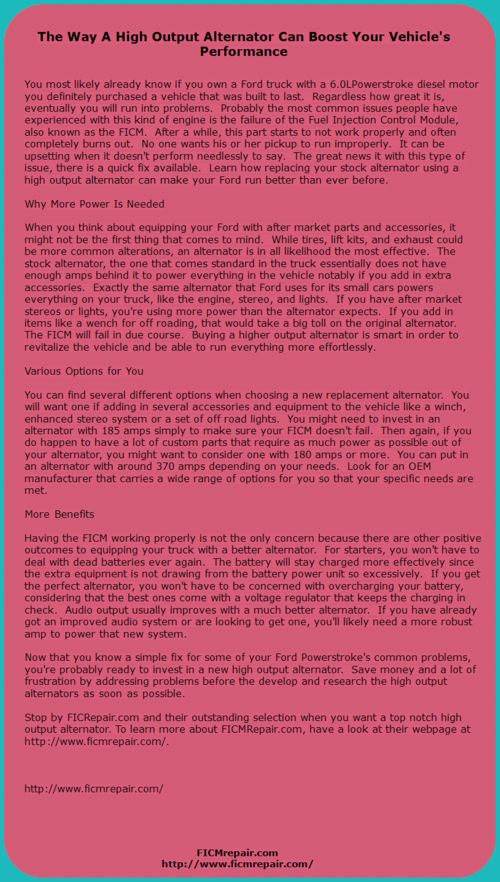 1 of Article 16 of the Federal Law "On the organization of the provision of state and municipal services", and their employees, as well as multifunctional centers for the provision of state and municipal services and their employees, approved by Decree of the Government of the Russian Federation No. 840 dated August 16, 2012, in respect of the same applicant and on the same subject of the complaint.
1 of Article 16 of the Federal Law "On the organization of the provision of state and municipal services", and their employees, as well as multifunctional centers for the provision of state and municipal services and their employees, approved by Decree of the Government of the Russian Federation No. 840 dated August 16, 2012, in respect of the same applicant and on the same subject of the complaint.
A complaint may be left unanswered in the following cases:
- presence in the complaint of obscene or offensive expressions, threats to life, health and property of an official of the authorized body, as well as members of his family;
- the inability to read any part of the text of the complaint, the last name, first name, patronymic (if any) and (or) the postal address of the applicant indicated in the complaint.
In response to the results of the consideration of the complaint, the following shall be indicated:
- name of the public service provider that considered the complaint, position, last name, first name, patronymic (if any) of the official who made the decision on the complaint;
- number, date, place of the decision, including information about the official of the authorized body, the decision and (or) action (omission) of which is being appealed;
- last name, first name, patronymic (if any) of the applicant;
- grounds for making a decision on the complaint;
- decision made on the complaint;
- if the complaint is found to be justified, the terms for eliminating the identified violations, including the term for providing the result of the public service;
- information on the procedure for appealing against the decision taken on the complaint.
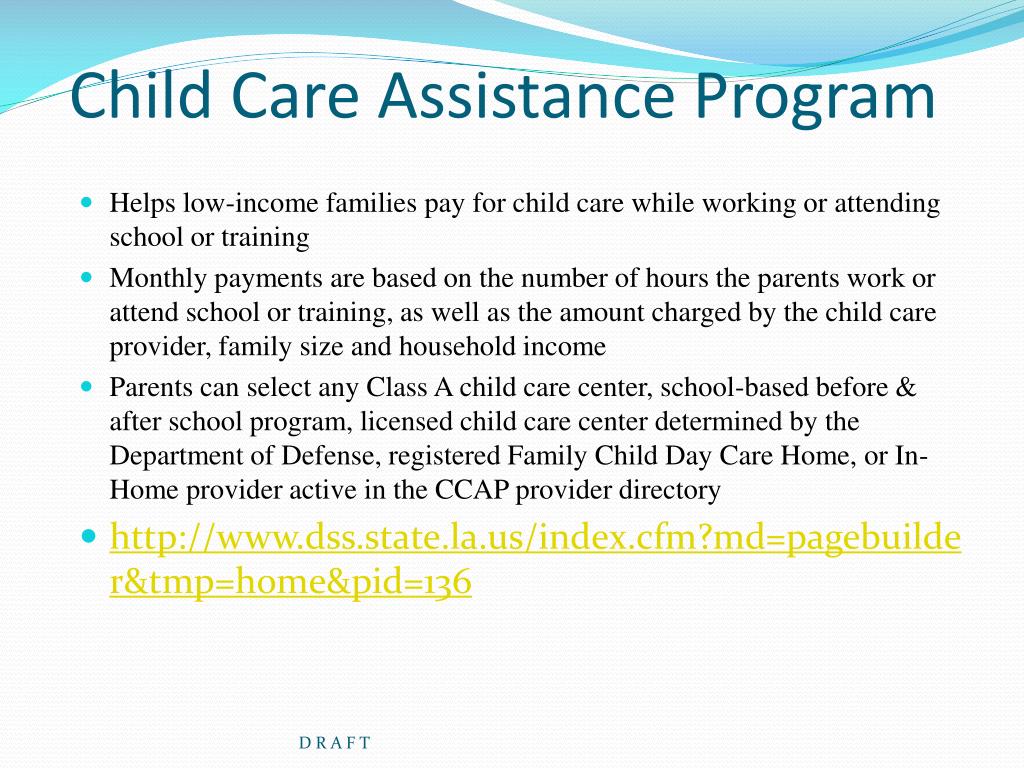
In the event that, during or as a result of consideration of a complaint, signs of an administrative offense or crime are established, an official of the authorized body authorized to consider complaints shall send the available materials to the prosecutor's office.
The procedure for informing the applicant about the results of the consideration of the complaint
A reasoned response based on the results of the consideration of the complaint is signed by the official authorized to consider the complaint and sent to the applicant in writing or, at the request of the applicant, in the form of an electronic document signed by the electronic signature of the official authorized to consider the complaint, the type of which is established by the legislation of the Russian Federation, no later than the day following the day the decision is made on the results of the consideration of the complaint.
Procedure for appealing a decision on a complaint
The applicant has the right to appeal the decision taken on the complaint by sending it to the Federal Service for Labor and Employment.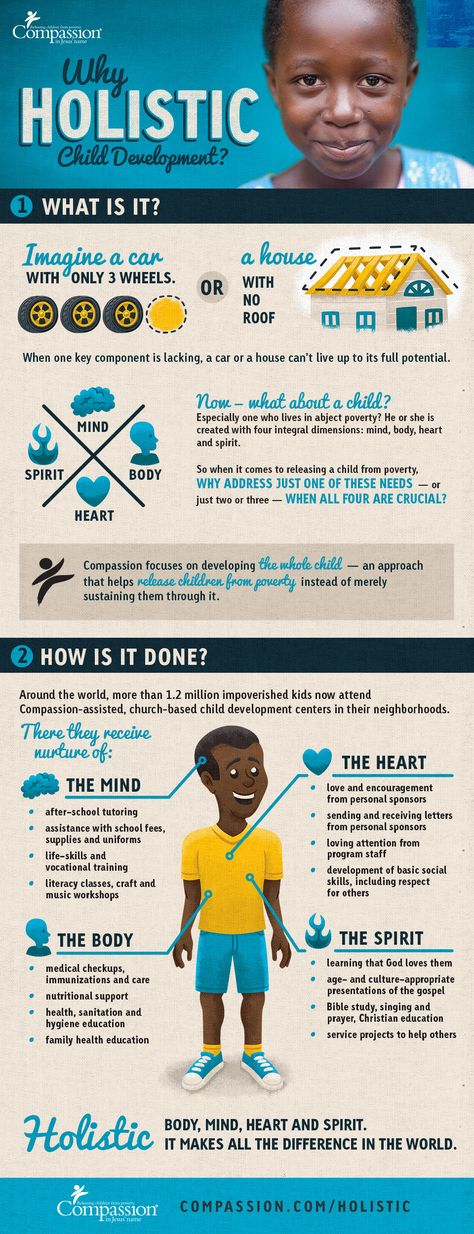
If the applicant is not satisfied with the decision made during the consideration of the complaint or the absence of a decision on it, then he has the right to appeal the decision in accordance with the legislation of the Russian Federation.
The applicant's right to receive information and documents necessary to substantiate and consider the complaint
The applicant has the right to receive comprehensive information and documents necessary to substantiate and consider the complaint.
Ways to inform complainants about the procedure for filing and considering a complaint
Information on the procedure for filing and considering a complaint is posted on information boards in places where public services are provided, on the website of the authorized body, on the Single Portal, Services Portal, and can also be communicated to the applicant orally and (or) in writing.
List of regulatory legal acts regulating the procedure for pre-trial (out-of-court) appeal against decisions and actions (inaction) of the authorized body, as well as its officials
The procedure for pre-trial (out-of-court) appeals against decisions and actions (inaction) of the body providing the public service, as well as its officials, is regulated by Federal Law No. 210-FZ of July 27, 2010 “On the organization of the provision of state and municipal services” and the Decree of the Government of the Russian Federation of August 16 .2012 No. 840 “On the procedure for filing and considering complaints against decisions and actions (inaction) of federal executive bodies and their officials, federal civil servants, officials of state non-budgetary funds of the Russian Federation, state corporations vested in accordance with federal laws with powers to provision of public services in the established field of activity, and their officials, organizations provided for by Part 1.1 of Article 16 of the Federal Law "On the organization of the provision of state and municipal services", and their employees, as well as multifunctional centers for the provision of I am state and municipal services and their employees”.
210-FZ of July 27, 2010 “On the organization of the provision of state and municipal services” and the Decree of the Government of the Russian Federation of August 16 .2012 No. 840 “On the procedure for filing and considering complaints against decisions and actions (inaction) of federal executive bodies and their officials, federal civil servants, officials of state non-budgetary funds of the Russian Federation, state corporations vested in accordance with federal laws with powers to provision of public services in the established field of activity, and their officials, organizations provided for by Part 1.1 of Article 16 of the Federal Law "On the organization of the provision of state and municipal services", and their employees, as well as multifunctional centers for the provision of I am state and municipal services and their employees”.
Types of family benefits | Sotsiaalkindlustusamet
You are here
Home Children, families Applicants for family benefits Types of family benefits
If a child is born dead or die within 70 days
Parents have the right to birth benefit and parental compensation if the child is born dead or die in within 70 days.
Childbirth allowance
One of the parents is also entitled to childbirth allowance in case of stillbirth from the 22nd week of pregnancy. The allowance is one-time, in the amount of 320 euros. The right to receive childbirth allowance arises on the day the child is born.
Parental benefit
If the mother works and is entitled to compensation for temporary disability
From April 1, 2022, a working mother is entitled to maternity leave and parental benefit to the mother for 100 consecutive calendar days starting from the 22nd week of pregnancy if the child is stillborn or dies within 70 calendar days. During this period, the mother is covered by health insurance.
If a mother started exercising her right to mother's parental benefit before the child was stillborn, she is entitled to mother's parental benefit and maternity leave for a total of 100 calendar days. For example, if a mother took maternity leave 70 calendar days before the birth of a child and started exercising her right to parental compensation to the mother after the birth of the child. dead, she is entitled to an additional 30 calendar days of maternity leave and parental benefit, for a total of 100 calendar days. If a mother took leave, for example, 30 calendar days before the birth, she is entitled to another 70 calendar days of maternity leave and parental compensation to the mother after the stillbirth of the child, for a total duration of 100 calendar days.
dead, she is entitled to an additional 30 calendar days of maternity leave and parental benefit, for a total of 100 calendar days. If a mother took leave, for example, 30 calendar days before the birth, she is entitled to another 70 calendar days of maternity leave and parental compensation to the mother after the stillbirth of the child, for a total duration of 100 calendar days.
An exception is also made here for mothers who, by the day of the child's death, have already used the mother's parental benefit in the amount of more than 70 calendar days. In this case, the mother is entitled to the mother's parental benefit additionally within 30 consecutive calendar days from the day following the day of the child's death. This means that no matter how many days the mother managed to use the mother's parental benefit by the day of the child's death, 30 calendar days of parental leave and parental benefit are guaranteed from the day of the child's death.
If the child dies at the time when the mother has managed to start using the already distributed parental benefit, the mother is re-registered as a recipient of the mother's parental benefit.
If the mother is not working
From April 1, 2022, a non-working mother is entitled to receive mother's parental benefit within 30 consecutive calendar days from the day following the day of the child's death, i.e. parental benefit cannot be received distributed by day over a long period of time, but if desired, you must use all 30 days in a row. During this period, the mother is covered by health insurance.
Fathers
From April 1, 2022, the father is entitled to paternity leave and father's parental benefit for 30 consecutive calendar days after the death of the child, regardless of whether the father used the right to paternity leave and father's parental benefit before the estimated date of birth of the child or before the death of the child. Father's parental benefit cannot be received on a daily basis over a long period of time, but if desired, all 30 days in a row must be used. In the case of fathers, there is no difference between granting and paying parental benefit, regardless of whether the father is working or not.
In order to receive family benefits, parents do not need to contact us and apply themselves. The Department of Social Insurance automatically obtains stillbirth information by exchanging data between the health information system and the social protection information system so that it is also possible to proactively offer family benefits to bereaved parents.
Additional parental paternity benefit is a type of benefit paid to fathers to enable them to take more part in the upbringing of their children. For working fathers, this is also accompanied by a 30-day leave from the employer.
For how long is compensation paid and for how long should it be scheduled?
You can receive additional parental benefit for a father for a total of 30 days, and not necessarily in a row (that is, the benefit can be received in installments). Supplemental parental benefit to the father can be received both during the period when the mother receives the parental allowance or the birth allowance (30 days before the expected date of birth of the child), and later.
The father is entitled to additional parental benefit until the child reaches the age of 3 or until the father receives regular parental benefit. Paternity leave cannot be separated from the receipt of compensation. If the father wishes to receive regular parental benefit without receiving additional parental benefit but does not notify us of the waiver of paternity leave, the Social Insurance Board will not be able to grant parental benefit until the father confirms his wish to waive paternity leave or use his. To fully waive paternity leave, you must submit an application to us.
Employment during paternity leave
While on paternity leave, the father must take a break from work at all his employers. The period of vacation use is entered in the Employment Register. During paternity leave, the father should not work and receive income! The principle of regular parental benefit does not apply, so the amount of parental benefit is not reduced when a maximum of half of the compensation has been received.
In accordance with the Law on Employment Contracts, an employer may refuse to grant leave if the notice of the desire to receive it is less than 14 days in advance and for a period of less than 7 calendar days. Supplementary parental benefit to the father within the meaning of the Employment Contracts Act is a normal rest period, therefore, being on paternity leave does not adversely affect the calculation of annual leave and these days are considered working days when determining annual leave. Like being on vacation, parental leave does not reduce seniority.
Non-working fathers (including also individual entrepreneurs (FIE) or representatives of the so-called liberal professions (e.g. notaries, bailiffs, sworn translators, auditors, bankrupt bailiffs), as well as persons working on the basis of a contract assignments and work contracts, etc. under the law of obligations, or members of the governing body of a legal entity) also receive additional parental benefit to the father for 30 calendar days. It can be used at any appropriate time from 30 days before the child's due date until the child reaches 3 years of age. The father can decide for himself whether he wants to receive the compensation in full at one time or in installments.
It can be used at any appropriate time from 30 days before the child's due date until the child reaches 3 years of age. The father can decide for himself whether he wants to receive the compensation in full at one time or in installments.
How to apply?
Be sure to talk to your child's mother and, if you have an employment relationship, also to your employer before you apply. It must be borne in mind that the employer may refuse to grant a vacation of less than 7 days if you notify him less than 14 days in advance. If the employer agrees, there are no restrictions on our part - you can go on vacation from any day.
The application for additional parental benefit is made through the self-service environment. If you wish to take advantage of the leave until the birth of the child, you must indicate the personal code of the child's mother and the expected date of his birth. After the baby is born, you will find a pre-filled offer in the self-service environment. If you are unable to use the self-service environment, please contact us at [email protected].
If you are registered in the Employment Register as a person with a valid employment relationship, you will need to provide your employer's email address. You should also include the email address of the mother of the child. The self-service system will send them a notice of your leave application and put it on hold for 5 days. You don't need to do anything else.
The employer and the child's mother have 5 working days to tell us if they disagree with your leave application. If your employer or the child's mother does not submit their objections, the system will automatically enter a leave note in the Employment Register after 5 working days.
We will calculate the amount of your compensation and pay it to you at the beginning of the next month (the payout date is the 8th of each month).
How is paternity leave calculated?
Additional parental benefit to the father is calculated according to the same rules as regular parental benefit.
To calculate the benefit, we first subtract the 9 full calendar months prior to the birth of the child (i. e., the average length of pregnancy, regardless of whether the child was born on time, premature, or postterm) and calculate the parental benefit based on income for the previous 12 calendar months. If the father takes a vacation in installments over several months, the average income for those calendar months is divided by the number of days in the month and then multiplied by the number of days the benefit is received.
e., the average length of pregnancy, regardless of whether the child was born on time, premature, or postterm) and calculate the parental benefit based on income for the previous 12 calendar months. If the father takes a vacation in installments over several months, the average income for those calendar months is divided by the number of days in the month and then multiplied by the number of days the benefit is received.
The amount of compensation depends on the amount of social tax paid on the income received. Since income is calculated based on social tax paid during the 12 months of the reporting period, the amount based on the reporting period may differ from the exact income received at that time, so it is worth paying attention to the social tax paid during this period. You can read more about how parental benefits are calculated here. You can also use the parental benefit calculator (informative).
The minimum rate of parental benefit is the minimum wage rate of the previous calendar year in effect on January 1 (in 2022: 584 euros).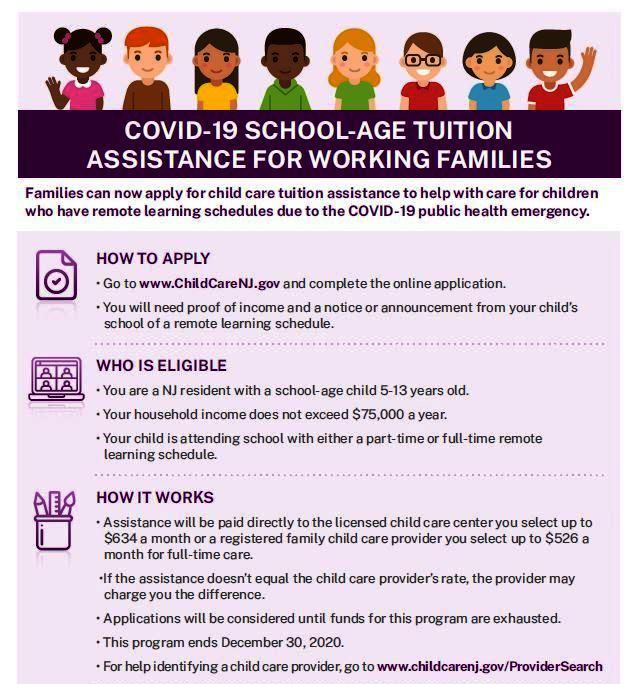 The maximum amount of parental benefit is three times the average salary in Estonia calculated on the basis of the law for the previous year (4,043.07 euros in 2022).
The maximum amount of parental benefit is three times the average salary in Estonia calculated on the basis of the law for the previous year (4,043.07 euros in 2022).
Example 1: During the period taken as the basis for the calculation, the father earned 1,500 euros per month. He went on paternity leave from January 14, 2021 to February 13, 2021, thus being on paternity leave for 30 consecutive days. Consequently, he was on parental leave for 17 days in January and 13 days in February. In January, the amount of his additional parental benefit amounted to (1500/31×17) 822.58 euros, in February - (1500/28×13) 696.43 euros.
Example 2: During the period taken as the basis for the calculation, the father earned 1200 euros per month. He took one week of paternity leave in January 2021, two weeks in February and the remaining 9 days in March. Thus, the amount of his additional parental benefit amounted to (1200/31×7) 270.97 euros in January, (1200/28×14) 600 euros in February and (1200/31×9) 348. 39 euros in March .
39 euros in March .
Other things to remember:
If several children were born in a family after July 1, 2020 at short intervals, then the right to 30 days of paternity leave and/or additional parental benefit to the father arises in connection with each child. Compensation / leave for each child should be used at different times - leave cannot be received at one time for all children, nor can multiple compensation be received in one period.
Twins are subject to one period, regardless of the number of twins.
If the family wants the father to receive both regular parental allowance and additional parental benefit to the father in succession, the first 30 days are always considered to be the period of additional parental benefit to the father. The father can start receiving regular parental allowance from the day when the child is at least 70 days old and the mother's maternity sheet is closed.
If you are on sick leave, it is recommended that you interrupt your paternity leave by notifying the Social Insurance Board as soon as possible.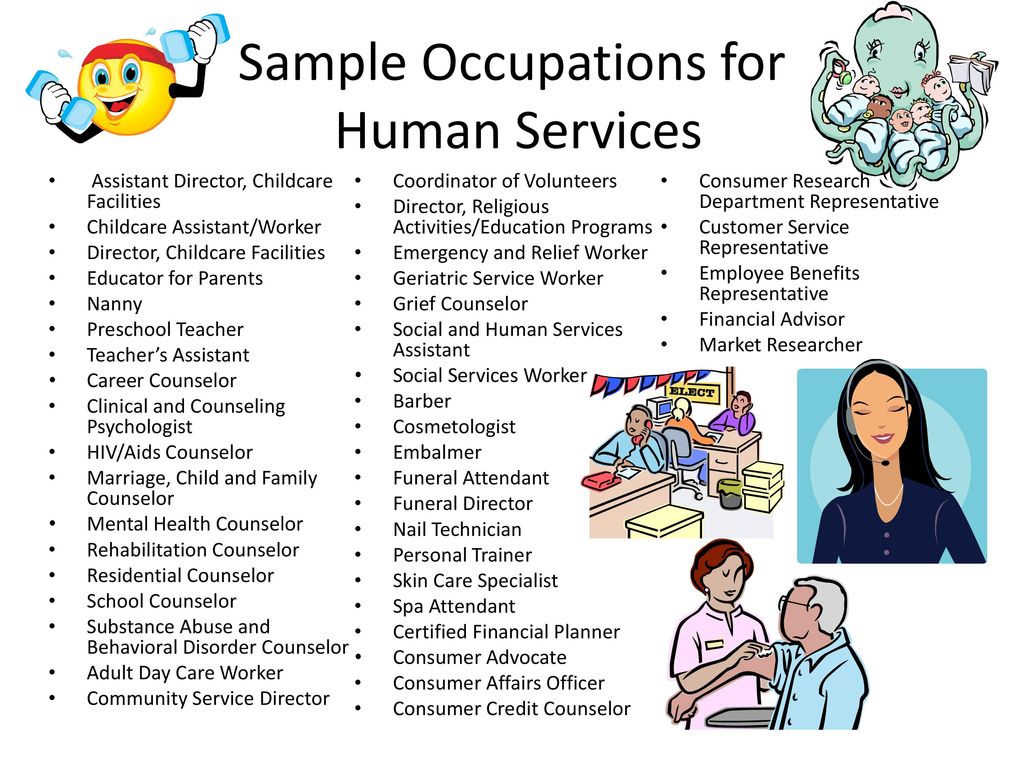 If you interrupt your paternity leave, the unused days are kept by you and can be used after your sick leave is closed.
If you interrupt your paternity leave, the unused days are kept by you and can be used after your sick leave is closed.
Starting on September 1, 2019 no longer assigned a child to leave
- due to children born since September 1, 2019, child care fee is no longer charged for a newborn or for any other child growing up in the family . The state will gradually connect free funds with the new system of parental benefit in the period 2020-2022.
- For all families where a child is born no later than August 31, 2019, we assign and pay a child care fee on the previous basis.
- Also for those who have already been assigned a childcare allowance as of August 31, 2019, we will continue to pay benefits .
Payment of the child care allowance will continue until it ends, but no later than August 31, 2024.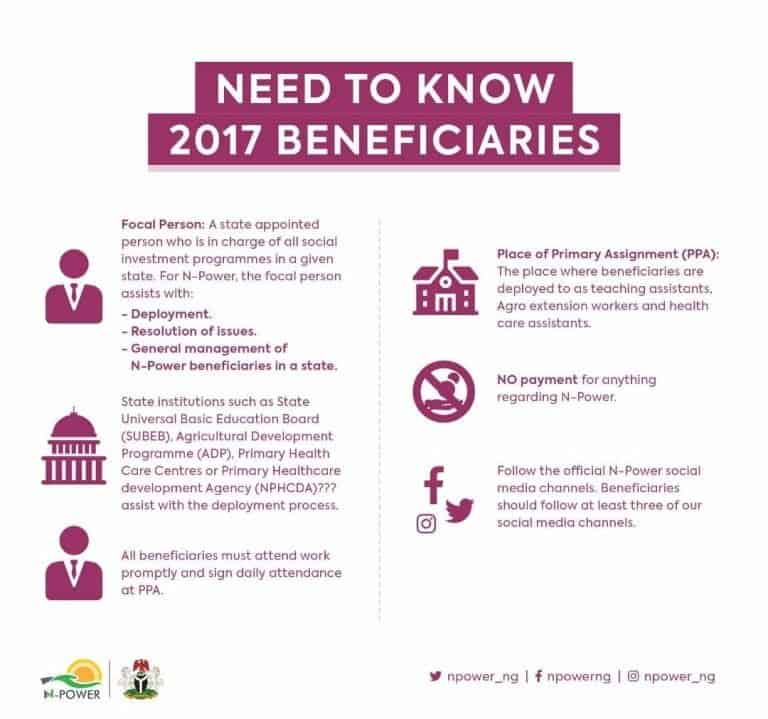
At the same time, only one parent in the family is entitled to child care allowance (after the end of receiving parental benefit), if the family grows:
- child under 3 years old – 38.36 euros per month for each child under 3 years old.
In addition, we pay a lower childcare allowance for children aged 3 to 8 if:
- from 3 to 8 years - 19.18 euros per month also for a child aged 3 to 8 years;
- There are 3 or more children in the family receiving child benefit – EUR 19.18 per month for each child aged 3 to 8 years.
If a child turns 8 in first grade, we will pay child care until the end of first grade, which is August 31st. If the child turns 8 in the second grade, or if the child is not in school, we will pay Child Care Allowance until the end of the month in which the child's birthday is.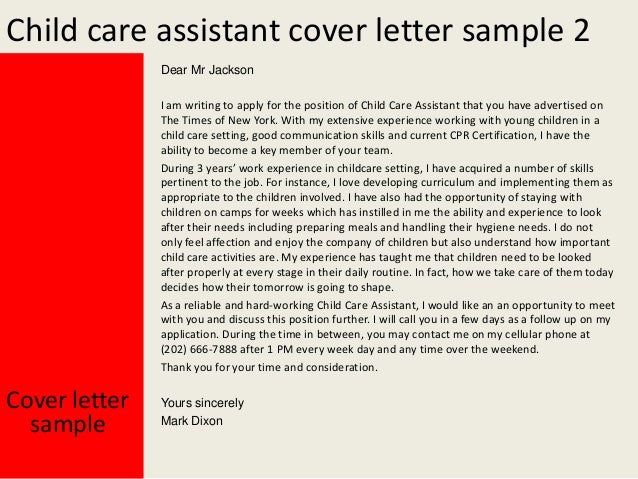
Being on parental leave and receiving childcare allowance may be someone else instead of the child's parent. However, there is a rule that the amount of child care allowance paid to such a person cannot exceed 115.08 euros per month in total.
Example . The family has three children: aged 2 years, 3 years and 6 years. For a 2-year-old child, a child care allowance is paid in the amount of 38.36 euros per month. For a 3- and 6-year-old child, child care allowance is paid under the condition that in a family with three or more children, all children under the age of 8 will receive child care allowance. The amount of the child care allowance paid for both a 3-year-old and a 6-year-old child is 19,18 euros per child.
In total, the child care allowance is paid to the family in the amount of 38.36 + 19.18 + 19.18 = 76.72 euros per month.
In addition, such a family is paid a child allowance for each child, which is 60 euros for the first and second child, and 100 euros for the third child, for a total of 220 euros per month. Thus, the family receives child allowance and child care allowance totaling 296.72 euros per month .
Thus, the family receives child allowance and child care allowance totaling 296.72 euros per month .
The right to receive child care allowance arises after the end of receipt of parental benefit . However, we still recommend that you apply for child care allowance or agree to receive it as soon as you submit your initial application for family benefits. In this way, after the end of the payment of the parental benefit, we will be able to immediately begin the payment of the child care allowance.
However, keep in mind that if one of the parents left his job for parental leave, he is also entitled to the childcare allowance. Parental leave can be obtained from the employer.
The state pays social tax for the recipient of the child care allowance, and thus health insurance is provided by the state to the parent to whom we pay the child care allowance! You can read more about health insurance HERE.
Parental benefit and child care benefit are not paid to the same family at the same time.